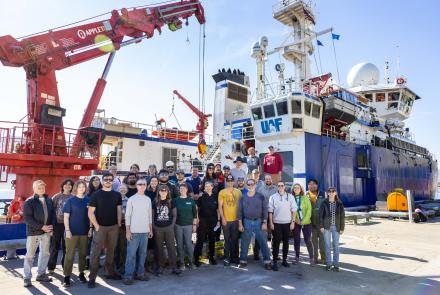Unusual Events in the Sky
Careful observations of unusual lights or of other unidentified objects in the sky can be of significant value. Fireball meteors, auroras, noctilucent clouds, mirage phenomena, atmospheric dust, city lights reflected from clouds, earthquake lights, lightning, forest fires, ice crystals and raindrops in the air, plus a host of other phenomena can create strange effects. Whether or not a person can identify the cause of the phenomenon seen, visual observations can be useful. In those cases where the object is not recognized, after the fact review of the observations usually will permit identification, especially if several different persons report their observations.
What should one look for and report?
1. TIME OF OBSERVATION
Knowing when is probably more important than anything else. Note down the date and the time as closely as you know it. After the observation, you can compare your watch to a time standard such as the radio or telephone to find any error in timing. Given only the time of your observation, we can easily determine if certain phenomena such as the aurora, noctilucent clouds or sunrise/sunset effects could have been responsible for the sightings.
2. DURATION OF THE EVENT
Did it last just a few seconds, a few minutes or an hour?
3. LOCATION IN THE SKY
North, south, east or west? How high above the horizon in angular measure? Remember that if you extend your arm and place the bottom of your fist on the horizon so that your thumb is stretched upward, the tip of your thumb will be 20 degrees above the horizon. You can "walk" your fist up the sky to measure angles everywhere; 4-1/2 fist plus thumb lengths brings you to the zenith (straight overhead). The "pointer stars" of the Big Dipper are about 5 degrees apart, and the moon and the sun are about 1/2 degree across. Do not bother to try to estimate the distance from yourself to an object in the sky; such estimates are usually so unreliable as to be meaningless.
4. SIZE OF THE OBJECT
As with location, a report of the angular size is important. Either give the size in degrees or compare it to familiar objects such as trees or buildings near you or the moon, sun or stellar constellations. If the object is large, you might indicate the fraction of the sky filled.
5. CONDITION OF THE SKY
How bright was the sky? Was it perfectly clear, haze covered, totally cloudy, broken clouds, scattered clouds? Was it raining or snowing? What was the wind? Were the sun and moon up or down? Where were they relative to the object seen? Were stars visible?
6. BRIGHTNESS OF THE OBJECT
If the object gave off light, was it bright enough to cast shadows or was it much weaker? Try to compare its brightness to familiar objects such as moonlit clouds or the moon itself. Another measure is how much light the object creates on the ground. (Whether or not the ground is snow covered will be important here.)
7. INTERNAL STRUCTURE
Did the object appear uniform everywhere or did it exhibit structure? If the structure was ray-like, did the rays appear to be parallel or did they appear to converge to some point, either within or outside the object?
8. MOTION
If the object moved, try to indicate the direction of motion and the angular speed. Since it is so difficult to estimate actual size and distance, estimation of actual speed, say in miles per hour, is equally difficult. Hence, the rate of movement given in degrees per second or per minute is much more valuable. Comparisons arc useful: as fast as a satellite, or a small aircraft near the ground or a jet aircraft at cruising altitude.
Almost no one will be able to note and record all of the eight characteristics listed above, especially if the object is observed for a short time. Still, an awareness of what kinds of observations are most valuable results in the making of better observations.
At the Geophysical Institute we maintain a valuable file of sightings of all sorts. Your contributions will be welcomed and preserved.



